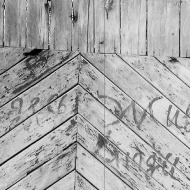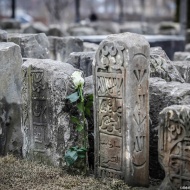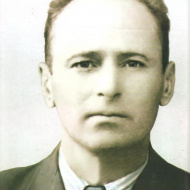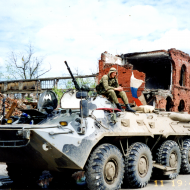Summary
Summary
The all-Russian competition, Man In History. Russia – The Twentieth Century has been running since 1999 by the Memorial International society with the support of the Local Studies Council, Russian Academy of Education; the Department of Regional History and Local Studies, Russian State University for the Humanities; and the Center for Visual Anthropology and Oral History, Russian State University for the Humanities.
The aim of the competition is to promote preservation of historical memory and rapproachement of generations, to involve schoolchildren in studying Russian everyday life, as well as regional and family history which is disappearing as the older generations are passing away.
The contestants were asked to make a real research: to question the relatives and acquaintances, to examine documents, photos from the family albums or local museums, to study relevant literature. As a rule, the schoolchildren were guided by the schoolteachers or the heads of the local history groups.
The principle sponsors of the competition are: the European Union (Brussels), the Open Russia Regional NGO (Russian Federation), the Ford Foundation (USA), the Heinrich-BÖll-Foundation (Germany), the Remembrance, Responsibility, and the Future Foundation (Germany). The contest was also supported by the Office of the United Nations High Commissioner for Human Rights (Geneva), the Open Society Institute (Soros Foundation-Russia), the Friedrich Naumann Foundation (Germany), the Foundation for Social, Economic, and Intellectual Programs (Russian Federation), the Koerber Foundation (Germany), the International Democracy Foundation (Russian Federation), Znanie–sila (Knowledge is Power) magazine (Russian Federation). This competition is part of Eustory, a network of independent history research competitions for school-level students.
In 2004, 2417 works took part in the competition. Thanks to the work of the competition Caucasian Knot coordinator in Grozny, for the first time since the foundation of the competition 155 works were received from Chechnya, four of which were awarded by the special prizes of the Caucasian Knot information and analytic web site. This collection includes 27 works which reflect their authors personal experience, the history of their families and the fates of different people against the background of the Chechen history.
The collection has four sections. Section One As Long As Im Alive… includes papers in which the Chechen schoolchildren, who never knew peaceful life since their birth, describe what they have lived through. These are stories of their flight from Grozny, stories about themselves and their families who tried to escape bombings, and descriptions of family losses. Their leitmotif is the longing for a normal human life.
Section Two Where I Shall Bring My Children Together, includes family histories. Schoolchildren write down family lore about the Chechens who fought in the Russian army during World War I and took part in the revolution. Many of their family members fell victims to the Great Terror. However, the family memory’s lynchpin is the 1944 deportation of more than half a million of Chechens to Kazakhstan. The tragic events of the past decade fortify this memory.
Section I enjoy looking at pictures includes papers about people who had played a significant role in the history of the Chechen nation. The young researchers highlight the most typical life experiences and the life stories of the well-known people, such as a Chechen poet who has survived GULAG.
The collection also includes several Russian schoolchildrens papers about the war in Chechnya. Section Lessons That Are Never Learnt raise a question about the causes of the developments in Chechnya and their tragic effects for the entire Russia.
In many papers the Chechen’s life experiences are intertwined with those of people of other ethnic origins in the soviet and post-soviet environment. Maxim Isaev gave a wonderful portrait of a Russian priest and human rights advocate who perished from thugs.
The papers have detailed comments and photographs. The book also includes a chronological chart of the most important events in the Russian/Chechen history.




